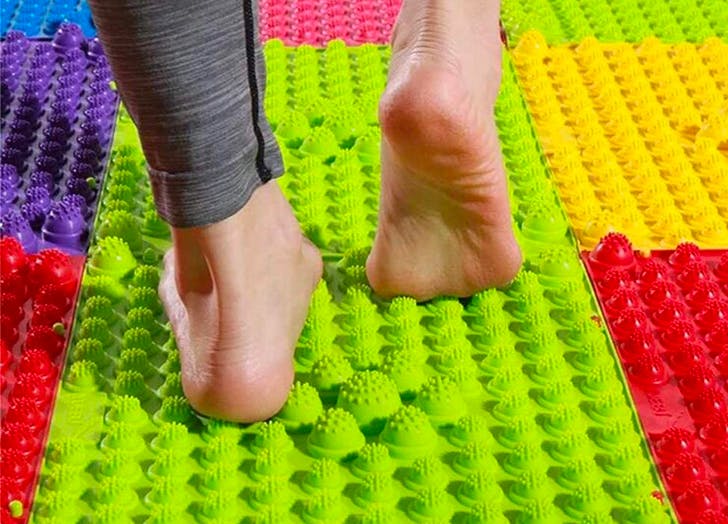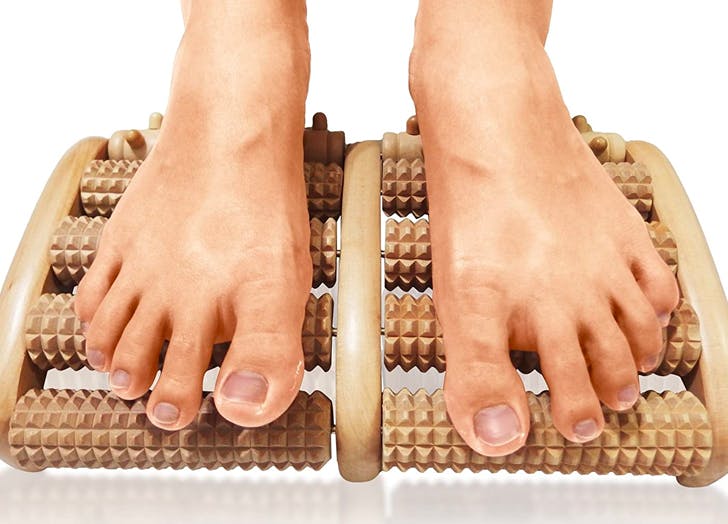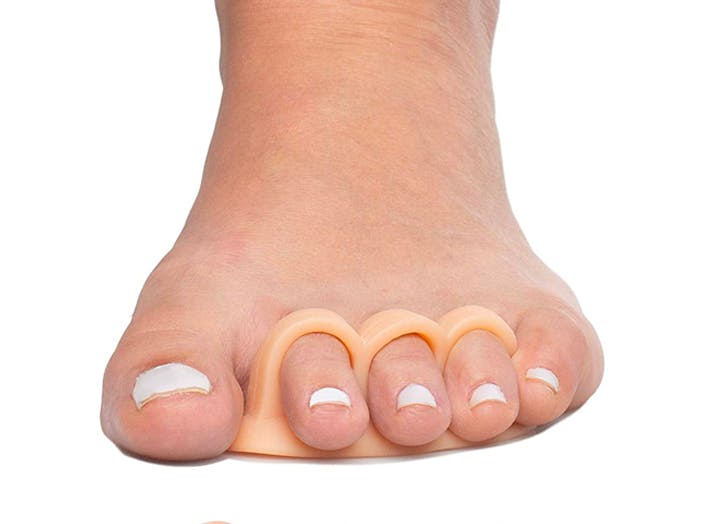Study Evaluates Minimally Invasive Bunion Correction Without Fixation
Minimally invasive percutaneous bunionectomy without fixation produces reliable and durable correction, functional improvement and decreased pain, according to a recent study in Foot and Ankle International. Following 195 patients for nearly three years after they had the procedure, the study authors showed significant improvement in radiographic angles, pain scores, patient satisfaction and functional assessments. They noted that complications occurred in 9.7 percent of the cases studied樂威壯
.
Neal Blitz, DPM, FACFAS relates his experience with minimally invasive bunion surgery is largely positive. He acknowledges it is not for every case and each method has advantages and disadvantages. Dr. Blitz cites improved cosmesis and structural results similar to that of an open bunionectomy.
“(Minimally invasive) techniques are easiest for the moderate bunion,” maintains Dr. Blitz, who is in private practice in New York City and Beverly Hills, Calif. He says surgeons should strongly consider establishing their own radiographic guidelines to identify when they would feel comfortable utilizing a particular minimally invasive method.
Patrick DeHeer, DPM, FACFAS also relates positive results in his experience using a SERI (simple, effective, rapid, inexpensive)/Bosch minimal incision procedure in addition to a separate Lapidus/first MPJ arthrodesis/proximal triplanar osteotomy.
Dr. DeHeer explains his minimal incision procedure of choice is basically a Hohmann procedure, which allows for triplanar correction. While Dr. DeHeer points out that this study did not evaluate multiplanar results, he says the transverse plane deformity correction is consistent with outcomes in his practice.
Dr. Blitz shares that complications due to lack of fixation likely caused these methods to fall out of favor in years past. He feels the complication rate in this study is encouraging but emphasizes an associated steep learning curve. In his experience, Dr. Blitz feels that screw or plate fixation in minimally invasive bunionectomies is superior to K-wires.
Conversely, Dr. DeHeer says the lack of fixation would be problematic for long-term correction.
“I have significant concerns about the lack of fixation used in this (study) regarding the maintenance of correction for the frontal and sagittal planes, neither of which were quantified in this study,” notes Dr. DeHeer, who is in private practice in multiple locations in Indianapolis.
He states the SERI procedure utilizes a single 2.0 mm (5/64 inch) pin, creating a tension-band type of fixation. He drives the pin into the navicular, locking the frontal and transverse planes past the first metatarsocuneiform joint. Dr. DeHeer also uses a bicortical 0.062 inch K-wire from the dorsal lateral distal metatarsal head, plantar proximal and medially across the osteotomy site to lock the sagittal plane and avoid elevation.
Dr. Blitz points out that any bunion surgery method has associated complications which can include malunion, delayed/non-union, neuritis, hallux varus, metatarsalgia, fixation failure and recurrence. Referring to this study, he feels that using fixation may lessen the malunion shifts in the metatarsal and possible metatarsalgia, but could also open the door to fixation-related complications.
Dr. DeHeer agrees that much of the complications noted in this study can be tied to lack of fixation but relates that overall complications with minimally invasive techniques can be low. The most common complication in his experience is discomfort at the osteotomy site, which the authors also noted in the study.
Is There A Correlation Between Plantar Fasciiits And Diabetes?
Is plantar fasciitis more prevalent in patients with diabetes? A recent study in the Journal of Diabetes and its Complications concluded that this is true, especially among patients with type 2 diabetes. Additionally, the study found female gender and higher BMI to be additional associative factors.
In her practice, Holly Spohn-Gross, DPM does see a correlation between plantar fasciitis and patients with type 2 diabetes. She attributes this at least in part to undue stress and strain from excess weight, which also corresponds to the study findings.
In his practice, David Haley, DPM has not seen as clear a correlation between the two diagnoses.
“I have not noticed any distinguishing factors that would make me believe that patients with diabetes have a differing rate of plantar fasciitis diagnoses over those patients without diabetes,” shares Dr. Haley, Chief of the Section of Podiatric Surgery with Christiana Care Health System in Delaware.
Additionally, he also finds, unlike in the study, that males more commonly present with plantar fasciitis in his practice but agrees that higher BMI is a key contributing factor.
When a patient does present with both diabetes and plantar fasciitis, both doctors agree that an individualized approach is most effective.
“I find many of my patients with diabetes may not have the resources to manage their condition. They are often overwhelmed,” explains Dr. Spohn-Gross, Vice President of the California Podiatric Medical Association. “I spend more time helping them set reasonable goals … and give support when they are correcting bad habits.”
Dr. Haley emphasizes close monitoring of the patient’s neurological and vascular status and notes there is also an “opportunity to improve the individual’s quality of life by instituting proper health and exercise techniques.”
Study Proposes Alternative Pulse Dosing Of Oral Terbinafine
A recent study in the Journal of Fungi proposes a quarterly pulse regimen of oral terbinafine as a possible alternative for dermatophytic onychomycosis.
Researchers stratified 63 patients into three groups. Group 1 received the conventional daily terbinafine dose (250 mg per day for three months). Group 2 received a monthly pulsed dose (500 mg per day, one week a month for four months) and group 3 received a 500 mg per day dose for seven days every three months, totaling four treatments. Analysis of effectiveness and adverse effects showed no statistical differences between the groups.
Nicole DeLauro, DPM, DABPM, DABFAS relates she has experience using a terbinafine pulse regimen, albeit one different from that described in the study. Specifically, she prescribes 250 mg daily for one week but then no medication for three weeks over three cycles total. Additional monthly renewals are possible depending on clinical response. She shares that length of treatment depends on nail appearance, extent of involvement and duration of the issue. Dr. DeLauro says all patients have confirmed mycosis by pathology and they must be committed to the treatment regimen. In her experience, this regimen has been efficacious and her patients have not experienced complications.
Tracey C. Vlahovic, DPM, FFPM, RCPS (Glasg) relates significant experience pulse dosing terbinafine. She most often uses 500 mg daily for seven days, once a month for three months with similar results to the traditional daily dosing. She may also add a pulse three or four months after the last dose as a “booster.” Dr. Vlahovic has not utilized the quarterly dosing described in the study.
Both doctors feel the small sample size is a limitation of this study. Dr. DeLauro, a member of the Board of Directors of the American Board of Podiatric Medicine, also points out that additional dosing options could have been added in the comparison.
“I really like pulse dosing for patients who want a modified regimen, for those who would like to partake in adult beverages for holiday and work functions, or those who need an oral antifungal but don’t want to take a pill every day,” notes Dr. Vlahovic, a Clinical Professor in the Department of Podiatric Medicine at the Temple University School of Podiatric Medicine.
“I think (this study) provides physicians another option for patients who are wary of taking oral terbinafine because of the knowledge of side effects,” adds Dr. DeLauro.
Dr. Vlahovic further notes that daily dosing is preferred for patients seeking a simplified regimen. She relates situations in which patients are still confused as to proper dosing, even with previous discussion, and issues with pharmacies or insurance.
















